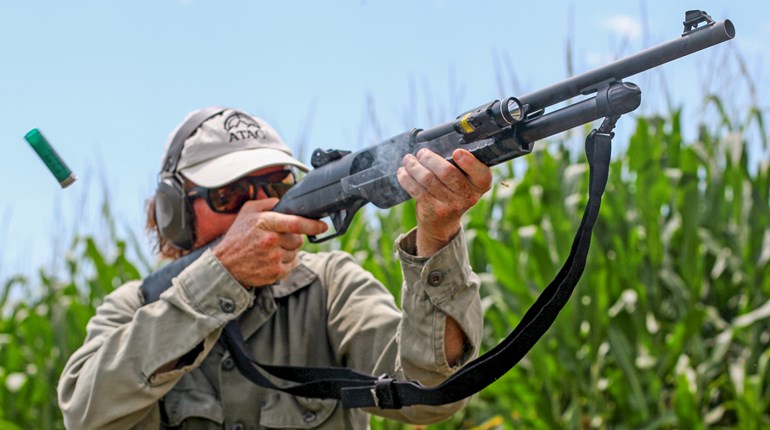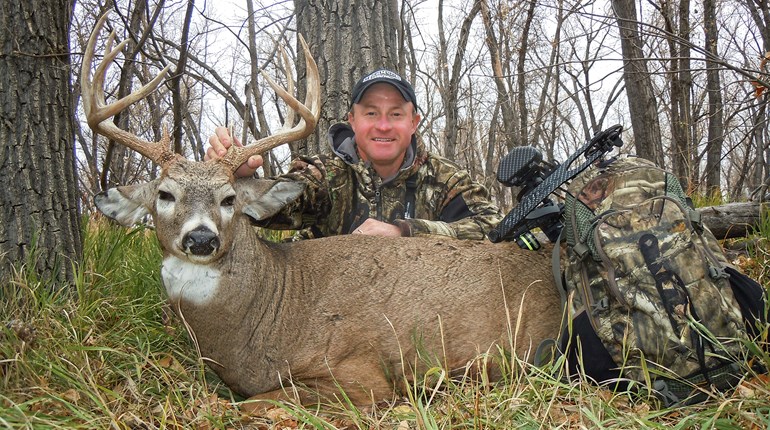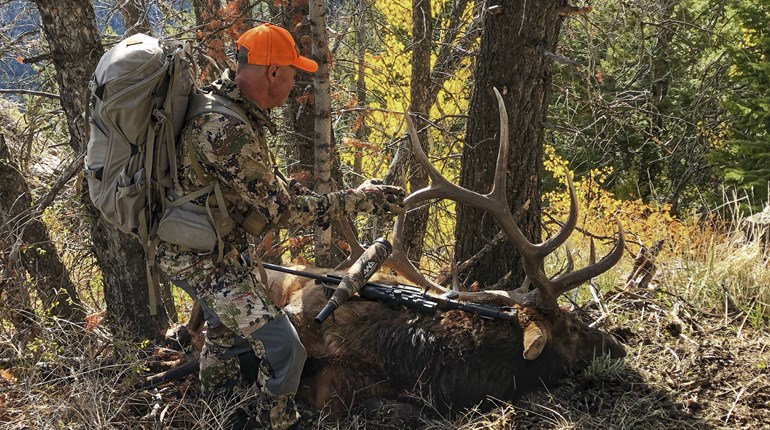
Don’t you hate games? They never let you change the rules. Just imagine the crazy little league scores kids could rack up if they could run outside the lines to avoid being tagged out. Luckily you can change the rules while coyote hunting.
Without shifting from conventional coyote hunting tactics, today you may be up against incredible odds, especially as the spring equinox approaches. Not since the 1940s have coyotes been hunted as doggedly, albeit for a different purpose. Today many consider calling in a coyote the greatest challenge in hunting. You’re literally hunting another hunter that has the home-field advantage. The challenge, public-land access, offseason opportunity and benefits of protecting other wildlife all amass to attract many to the coyote-hunting brotherhood. It’s one of the few hunts in which it is acceptable to create competitions, adding even more fascination to the pursuit.

Regrettably, all of this notoriety isn’t making it any easier to add more fur to your winter sales. The ever-failing TV persona of Wile E. Coyote has no place in the reality of modern coyote hunting. Modern coyotes may not be using Acme rockets, but they are using instinctive survival behavior fueled by paranoia to make them look more like the Roadrunner.
To gain back a foothold in a game that seems to be weighted heavily in favor of the coyote, you need to change the rules. A slight change of tactics can make a world of difference in the sunset hours of the season.
Change the Channel
Texan Gary Roberson believes he’s on to something evolutionary in the predator-calling universe. This Mossy Oak pro staffer should know; he’s been calling coyotes since the sprightly age of 10, and now counts five decades of honing his skills in his rearview. As owner of Burnham Brothers Calls and host of the Pursuit Channel predator hunting show “Carnivore,” Roberson understands that sometimes you have to change the rules. For him it’s an ultrasonic change that he believes will boost your success in the coming years.

“For about 25 years I’ve wanted to get into ultrasonics,” explains Roberson. “You and I can hear up to 20,000 hertz, younger hunters maybe a bit more, but coyotes can hear to about 45,000 hertz and bobcats up to 64,000 hertz. I knew if I could reproduce sounds at those higher levels it would make a huge difference in calling success.”
Roberson’s observations of coyotes and bobcats twisting their heads with no discernible audible cues helped him deduce that the predators were likely tuning in to a higher frequency. The real revelation actually came from a domestic dog. Roberson’s been working on the ultrasonic concept in electronic callers for about three years. A constant fixture in the shop is an old Dachshund that typically just lies around. It’s heard every sound Roberson has worked with and thus ignores them with a snore. That all changed the first time he played a baby-cottontail distress call recorded and projected with ultrasonic equipment, says Roberson.
“I started the recorded sound of the cottontail and that Dachshund tore out of her bed and charged the speaker with a mission to rip it apart. The ultrasonic version of that sound made all the difference, and that’s exactly what we’re seeing with the testing of our new electronic caller.”
Investing in the right testing equipment and researching devices that could record and reproduce the higher frequencies revealed much for Roberson. The first rabbit they recorded soared to more than 90,000 hertz. They also tested several of the top electronic callers on the market including his Burnham Brothers Compucaller. None went above 18,000 hertz during testing. The equipment was showing that animals were indeed capable of producing and hearing sounds in frequencies above what humans were likely hearing.
Burnham Brothers is in the final stages of development and manufacturing of the new electronic caller dubbed the Ultracaller. Roberson claims its introduction will be “the first major improvement in sound quality to the predator-hunting market since the 1950s.” If you can’t wait or simply don’t have the extra money to invest in the latest technology, Roberson’s research divulged a simple way for you to achieve high frequency: use hand calls.
“I hear it all the time that hunters can’t call up anything with electronics any longer,” says Roberson. “I’m seeing the same results on properties I typically hunt. I get permission after deer season to hunt managed deer lands. With some having seasons that go from October through February, that’s five months of hunting pressure, and many of the deer hunters bring along an electronic caller. When the deer hunting is slow they turn it on to see if they can call a coyote. That means when I come in after the season, I’m hunting coyotes that have been messed with for more than five months.”
To counter this coyote higher education, Roberson had to go back to hand calls like the Burnham Brothers Mini Blaster. It’s boosted his success, and after testing the calls, he believes ultrasonic frequencies are the reason. Many of the calls were registering between 40,000 and 50,000 hertz, matching what a coyote is capable of hearing and falling below the maximum threshold for what a bobcat can hear. Put a hand call into play late in the season for your change-up—and a chance to send a high-frequency invitation to schooled coyotes.
Move It and Plant It
Steve Monson lives a world away from Roberson’s Texas in south-central Montana, but he still struggles with the effects of pressured coyotes. With 40 years of coyote-hunting experience, including working as a pro staff team member for Les Johnson’s "Predator Quest," he’s seen dramatic changes in coyote hunting. (Check out Steve Monson on the "OutDoors 406” YouTube channel.)
“When I see coyotes holding up at long distances, starting a warning bark after I use a distress sound or just refusing to respond to my calls, I know they’ve been educated by other hunters,” says Monson. “December is a big month for dozens of coyote-hunting derbies in a large part of Montana where I hunt. In my opinion, it is a month-long education that every coyote in the country will utilize for the rest of the season. They hear every rabbit distress sound imaginable. I often spot the coyotes a long way out just sitting there watching warily, and no sound I throw out there causes them to budge. I have experienced this over and over in the past four to five years in areas that used to be highly productive for me. Now I have to work to outsmart them.”
Monson isn’t shy about sharing the fact he oftentimes throws the proverbial kitchen sink at educated coyotes in the late season. This kitchen-sink approach includes more than just changing calls. Monson also believes going the distance has aided his success when coyote hunting becomes challenging. Walking a little farther has merit on coyotes that have seen or heard it all.

“Park farther away from where you want to call,” begins Monson. “This may require walking 400 to 500 yards or more to where you’re going to set up, but it can make a huge difference getting coyotes to show up. The quieter and stealthier you are when getting into a stand will also up your odds. A coyote’s life depends on noticing every movement and sound in its area, so anything out of place automatically puts it on high alert.”
Late in the fur season, Monson is on the lookout for locations that actually don’t look that good at all for coyote hunting. Areas he might bypass in the fall or early winter are now on the hit list. This includes hunting around building sites, even around active farms or ranches. He also takes stands nearer to roadways later in the season, realizing that the average hunter hardly gives a location like that a second glance. While hunting near busy roads or populated areas, Monson stresses safety—but don’t overlook the overlooked. If a region is particularly dead, he considers another move. This one kicks off by shifting his truck into drive and putting the unproductive area behind him.
“If I’m not having success in an area, I’ll move 20 to 50 miles away, which many times is the difference between being successful or not. Numerous times I’ve experienced coyotes that weren’t responding in one area, but by moving to another area and using the same sounds, they responded very aggressively,” Monson says.
It sounds as if Monson is a roamer, but that all ends when he settles into a site with a view. That’s when he believes late-season callers need to plant it for the long haul. His advice is to take more time now than ever before on a set, along with the use of different sounds.
“Being impatient and expecting an educated coyote to show up in 10 to 15 minutes late in the season likely isn’t going to happen. What worked in September and October for the same amount of time on a set usually doesn’t work later in the season,” states Monson. “Educated coyotes will eventually come in if they decide it’s safe to move in closer, but they will sit on a high point or ridge and scope out the situation for what sometimes feels like forever.”
Monson’s routine for late hunting is the following: First, he slows down the tempo in addition to changing the sounds he uses. He also modifies the sequence of how he introduces different sounds into the setup. Another change to the rules is the fact he adds more time between different sounds, like a coyote vocalization and a distress sound.
“Five minutes or longer between sounds is not unusual when calling educated coyotes. I have to admit, it takes patience to sit that long in silence between sounds. It sometimes feels like an eternity, but it’s worth it. For this to be effective, get comfortable and plan to be on a set for at least 30 to 45 minutes,” Monson emphasizes.
A final rule Monson bends is to hunt the weather. To him, it makes every coyote killable. When temperatures plummet or deep-snow conditions exist, coyotes require more calories to survive. Monson has confidence that survival mode prods even the wariest coyotes to make mistakes they typically wouldn’t make in warmer conditions. “They take a risk they normally wouldn’t take, and that’s how you use conditions to your advantage.”
Be a Simpleton
If you thought I was going to stay out of the discussion, you’ve never had a late-night campfire talk with me. Like Monson, I believe patience to be the true factor in adding another coyote or two to your winter take in the late season. Hungry or territorially angry coyotes want to investigate sounds, but suspicions prompt them to take on a slowpoke approach. Many of my late-season sets typically last an hour, or even longer. In addition, I try to be a simpleton. Here’s an example. Since February is typically breeding season across coyote country, and March is the month of territorial protectionism, basic howling can be a simple winning solution.

My last coyote of the season responded immediately to a howl volley I emitted across a basin one afternoon in late February. My SIG binocular revealed not one, but a pair, yapping back at me. I cut them off with another lone howl and then promptly shut up. The open landscape allowed me to binocular-track the pair moving my way with an eventual transition to a single coyote. An hour after our initial spat, I shot the male at 250 yards with only minutes of good shooting light left. I’m sure the female was nearby, but for some reason, held up out of sight to possibly populate again.
Adding to the singular sound of my simpleton approach is to go with an unaccompanied distress call, but ditching sounds such as cottontails or even fawns. Space them out as Monson suggests, and be patient. Even more appealing to me today is basic bird banter. Refer to the scavenger section of the Audubon guide. Crows, ravens, jays and magpies occupy portions of all coyote country. Their squawking boosts coyote confidence; if a coyote has a “rumbly in my tumbly,” the sounds of birds busy scavenging has the power to pull it in for a look. Best of all, these sounds have the capacity to lure in the real aerial team, giving you live decoys and additional acoustics. Stay still and let the live show do its work.
Two winters ago, I conversed with coyotes before shooting light for more than an hour after with no close encounter. They’d howl back, but wouldn’t commit for a look. After all went quiet for about 30 minutes I dropped into a canyon and charged closer. Finding a high ridge, I crawled to the top and set up prone looking into the next valley. Instead of reigniting the coyote conversation, I went straight to a series of intermittent crow calls. After about 20 minutes a flock of crows flapped by for a look, and to my surprise, a pair of coyotes followed. I was able to V-Max the leader, but the rear coyote had time to dive into a coulee.
By the time your cabin fever hits a crescendo, coyotes have felt the pressures from a nation possessed with predator hunting. Don’t run the bases on your next hunt. Change the rules and run outside the lines to increase your success on this iconic survivor.

Bust Them When They Take a Peek
One characteristic of pressured coyotes you may be able to cash in on is their nature to view from afar. It’s not uncommon for a coyote to appear on a field edge or a ridgeline at a distance of 500 yards or more and sit down for a visual assessment. If you have situated yourself in a solid vantage point that gives you an opportunity to shoot, there is equipment out there today that can get the job done.
Traditional companies such as Remington and Savage Arms, and even specialty companies like Gunwerks, offer rifles to shoot those distances and beyond. Top your selection with a quality riflescope that includes trajectory assistance for precision aiming, and the days of estimating holdover are over.
Of course, ammunition companies have followed suit to help you in the projectile department. Federal continues to add options, such as the .224 Valkyrie specifically loaded for varmints with the 60-grain Nosler Ballistic Tip bullet. Hornady’s Varmint Express lineup continues to expand, and you can find many hard-hitting loads in the company’s other lines, including the Outfitter series.

Late last season I hunted through the Bergara Premier series, nine total, and decided on an Approach model in 6mm Creedmoor as my dedicated coyote rig. For more information, visit bergarausa.com.
I topped it with SIG Sauer’s Sierra3BDX riflescope in 6.5X-20X-52mm. This riflescope mates with any SIG Sauer rangefinder that includes the Ballistic Data Xchange (BDX) for wireless, Bluetooth-sharing technology. Range with a preset rangefinder, and it automatically adjusts the scope's illuminated reticle for fast coyote situations. For more information, visit sigsauer.com/products/electro-optics.

The Bergara Approach loved the 108-grain ELD Match bullet in Hornady Match ammunition. The bullet’s Heat Shield tip guarantees no deformity in flight from heat. Combine that with a customized boattail blueprint and the most favorable secant ogive profile for a bullet that offers the highest ballistic coefficient in any lineup. My groups are consistently half-inch at 100 yards or less. For more information, visit hornady.com.
The only drawback to the setup is its weight. With a full magazine, the Bergara Approach weighs just less than 13 pounds, which is comparable to my go-to big-game rig in .300 Win. Mag. Since I’m not spending all day ascending mountains, I don’t worry about the weight—especially when a coyote is barking at me 450 yards away. Send it!




































